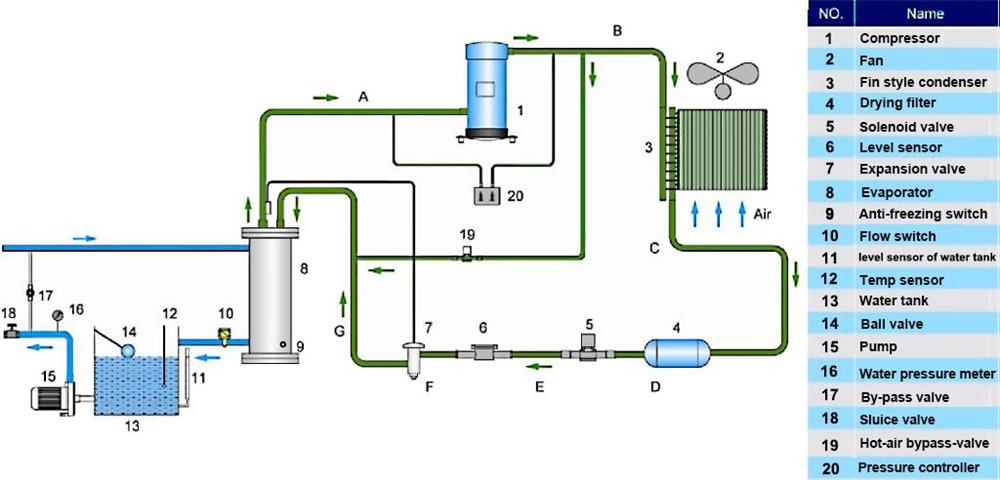How Does an Air-cooled Water Chiller Work?
Industrial water chiller typically comes as a complete package of closed-loop systems, including chiller, condenser and circulating pump, expansion valve, no flow shut-off, internal cold water tank, and temperature control station.
Air-cooled water chiller in ATO automation is suitable for mold cooling, reducing product molding cycle, and can also be used for equipment cooling to maintain normal temperature. It is also suitable for other industries that require cooling. In this atticle, we will introduce the worling principle of industrial air-cooled water chiller.

When the air-cooled water chiller starts, the compressor starts to work. The refrigerant is compressed into high temperature and high pressure gas during the process from B to C, and then cooled by the condenser to become liquid. The heat is carried away by the cooling air. During the process from C to D to E and F, the liquid refrigerant is dried and filtered through a filter drier.
After that, it passes through the solenoid valve, level sensor and then reaches the expansion valve. In the process from F to G, the high pressure liquid refrigerant is throttled and depressurized by the heat expansion valve and the temperature goes down. In the process of G to A, chilled water absorbs the heat of process water in the evaporator and returns back to the compressor. This heat exchange process repeats until process water is cooled down to required temperature.
Hot-air bypass function: the compressor continues working when the working process of water chiller is cooled down to the required temperature, then the hot-air bypass valve opens as the temperature drops to its set value. A part of the refrigerant from the compressor passes through the bypass valve and then reach the evaporator, balancing out part of the machine refrigerating capacity and then goes back to the compressor without passing through the condenser. With the help of hot-air bypass valve, the system can stay in an balanced condition and meanwhile can keep the control accuracy at ±1 ℃.

